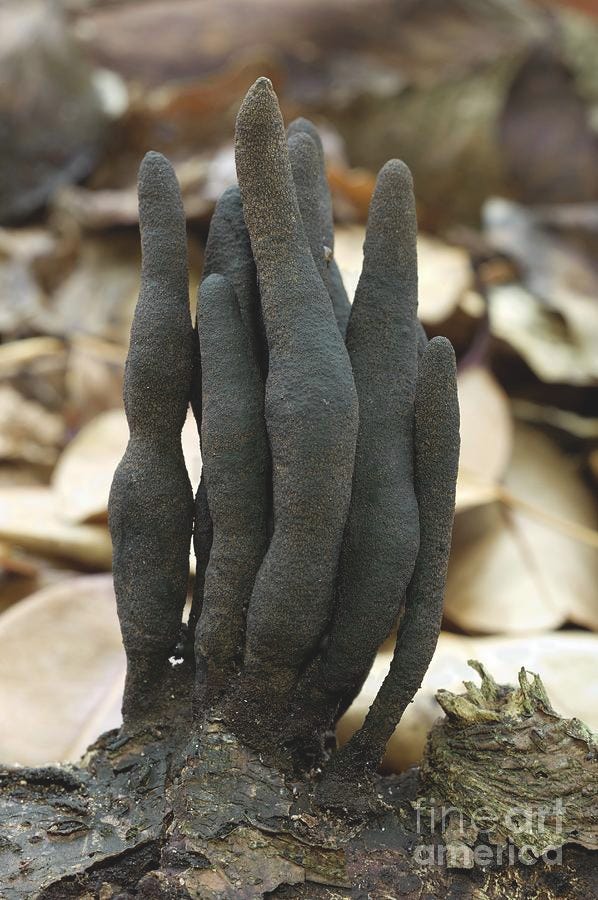Dead Man’s Finger
Xylaria Polymorpha: Saprobic Fungus

“ Plants and mushrooms have intelligence and they want us to take care of the environment. They want to communicate that to us in a way we can understand .”-Paul Stamets
Fungi are eukaryotic organisms that include microorganisms such as yeasts, molds, and mushrooms. They can be classified into four divisions as follows:
1. Chytridiomycota (Chytrids)
2. Zygomycota (Bread molds)
3. Ascomycota (Yeasts and sac fungi)
4. Basidiomycota (Club fungi)
Some fungi are capable of causing superficial, cutaneous, subcutaneous, or systemic diseases.
Dead Man’s Fingers
Xylaria polymorpha, Dead Man’s Fingers, is a saprobic fungus commonly found in forests on decaying wood, injured trees, stumps, and woodland areas. It resembles burned wood and is polymorphic, existing in many forms.
The scientific classification of Xylaria Polymorpha is shown below-
Scientific classification of Xylaria Polymorpha
Domain: Eukaryota
Kingdom: Fungi
Division: Ascomycota
Class : Sordariomycetes
Order: Xylariales
Family: Xylariaceae
Genus: Xylaria
Species: X.polymorpha

It is black with a distorted, club-like, finger-shaped, wrinkled, charcoal-like surface. It is not edible. The fruiting body has a width of 1/2–1/4 inches and a height of 1/2–3 inches.

It is a fungal pathogen that grows in small clusters of three to six mushrooms, resembling fingers emerging from the ground. Each “finger” is about 1–3 cm in diameter and can reach a height of 3–8 cm. In its early stages, it appears white, but as it matures, it takes on a black color. This fungus is considered a relatively weak pathogen, primarily affecting stressed trees.

Fungi play a crucial role in maintaining a healthy ecosystem by decomposing the tough material that wood is made of, thereby cleaning the forest and facilitating the return of nutrients back into the soil.
References :
Phillips, Roger ( 2010). mushrooms and other Fungi of North America. Buffalo, NY: Firefly Books.p.375. ISBN 987–1–55407–651–2.
The National Center for Biotechnology Information advances science and health by providing access to biomedical and…www.ncbi.nlm.nih.gov
Comments
Post a Comment
Please do not enter any spam link in the comment box.